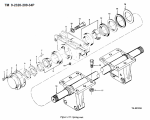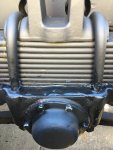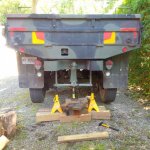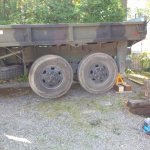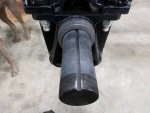Do I need to jack up the entire back end of the truck....... ?
No, not the
entire back end..... With truck on firm and level ground (and front wheels well chocked!) - place a bottle jack in the center of the spring seat bracket (#18 in the attached diagram) - plus one jackstand to each side of it. Then lift up until the spring ends on both sides are just free to move up-and-down in their respective pockets mounted to the axles.
For your own safety, don't rely on the bottle jack, but have it resting on the jackstands, before going further!
(Eventually, the tandem is out of alignment, so one- or even both axles have to be lifted a bit and shifted back to center, to allow the springs to move freely).
Now grab each spring pack and try to rock it sideways. There should be absolutely no play, horizontally! If so, you are a lucky man and good greasing is all it needs.
Otherwise, the spring seat bearings and related parts need to be disassembled/ inspected - even if you felt very little play, only.
Side note (and I know that this has been posted before): Older trucks - not been overhauled by the military - most likely still have the early style, tapered roller bearings in there. Inner and outer are the same p/ns (#3920 cup & #392 cone, same as outer wheel bearings).
Chances are that these are shot and need to be replaced.
In later production years, there has been an "upgrade" to this design, to have solid (steel) cones riding in those same 3920 cups (#8 in diagram), instead of the roller bearing cones. While this seems to last a bit longer, that setup still has its flaws IMHO, because the original keyway in the spindle remained unchanged, so only the outer cone can have its key (#7), to prevent it from spinning on the shaft. Guess what happens with the inner cone... instead of remaining stationary it slowly-but surely
eats the spindle! Good thing is that it is the outer bearing which sees the greater load, in this system.
